Project to replace gas boilers will help Te Whatu Ora – Te Tai Tokerau on its path to halve carbon emissions
Whangārei Hospital’s Te Kotuku maternity building is set to become fossil fuel free with its two natural gas boilers to be replaced with electric heat pumps for water heating and air conditioning.
Te Kotuku opened in 2016, with 22 beds and clinical services on the ground floor. Construction is underway to fit out level two with a Paediatric Ward and Special Care Baby Unit and to build two new levels for a laboratory and a plant room to include the new heat pumps, air handling units and fans.
The conversion to heat pump technology is being covered by a Te Whatu Ora investment of $585,000 and a contribution of $390,000 from the Government’s State Sector Decarbonisation Fund, administered by EECA (the Energy Efficiency and Conservation Authority).
EECA estimates this project will reduce carbon emissions by around 1100 tonnes over 10 years – around 110 tonnes per year on-average over 10 years.
This puts Te Whatu Ora – Te Tai Tokerau well on track to achieve its target to halve emissions by 2030, compared with the 2015/2016 benchmark year when the organisation, then Northland District Health Board (DHB), began measuring its Greenhouse Gas Emissions. Total emissions are already 20 percent lower than 2015/16.
Te Whatu Ora also has three rural hospitals in Northland – at Dargaville, Bay of Islands and Kaitaia – which all had their diesel boilers replaced with electric heat pumps over recent years.
Sustainability Development Manager Margriet Geesink says replacing the old diesel boilers with electric heat pumps has significantly improved energy performance, as well as saving around $300,000 yearly on energy costs and boiler maintenance.
“This is partly due to being able to remove the steam reticulation pipes which continuously lost heat, but also that heat pump systems can operate individually, providing separate buildings with their own source of hot water and heating. They give us the ability to put heat only where it was needed and adjust it in response to seasonal temperature variations.”


Pictured: Sustainability Development Manager Margriet Geesink between the two gas boilers to be replaced with heatpump technology for Whangārei Hospital's Te Kotuku building.
Margriet says the impacts of climate change are already showing, with one example being the severe weather events recently.
“To avoid the worst or irreversible adverse impacts of climate change on the planet, impacting the health of our population, strong and immediate action is required,” she said.
“Here at Te Whatu Ora in Te Tai Tokerau, natural gas is our largest emissions source, so continuing to progress projects like Te Kotuku building’s gas boiler conversion will keep us on the path to phase out the use of fossil fuels for energy generation.”
EECA Public Sector Portfolio Manager Paul Bull says the project is an excellent example that paves the way for other organisations across the private and public sectors.
“By taking steps to decarbonise their operations, Te Whatu Ora – Te Tai Tokerau is demonstrating leadership in reducing emissions and creating a healthier future for New Zealand,” he said.
Other decarbonisation projects in Te Tai Tokerau include transitioning 150 fleet vehicles to electric vehicles, with 113 EVs now in use.
Another achievement is a 94% reduction in emissions from anaesthetic gas used in surgical theatres by phasing out desflurane and using alternatives with much lower global warming potentials.
Te Whatu Ora – Te Tai Tokerau also has an EKOS Zero Carbon Flights certificate for offsetting patient transfer flights and staff business travel flights booked with its travel management provider.
In 2020 the organisation, then Northland DHB, became the first DHB in New Zealand to complete an energy decarbonisation roadmap for the next five to 10 years.
In 2020 and 2021, Northland DHB won the Greenhouse Gas Reduction Category for the Pacific region in the yearly Health Care Without Harm Climate Challenge Awards.
The organisation is also one of 50 institutions worldwide recognised as Health Care Climate Challenge Champions by the Global Green and Healthy Hospitals Network.
Last modified:
